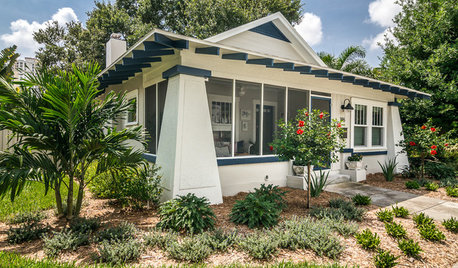Hard soil
RpR_
12 years ago
Related Stories

GARDENING GUIDES5 Prairie Wildflowers That Can Heal Your Soil
Get free, organic soil fertilizer with nitrogen-pumping plants that draw pollinators too
Full Story
GARDENING GUIDESGrow a Beautiful Garden in Alkaline Soil
Got alkaline soil? Learn how to manage it and the many beautiful plants that will thrive in this ‘sweet’ soil
Full Story
GARDENING GUIDESGardening Solutions for Heavy Clay Soils
What’s a gardener to do with soil that’s easily compacted and has poor drainage? Find out here
Full Story
FARM YOUR YARDHow to Get Good Soil for Your Edible Garden
The nutrients in your soil feed the plants that feed you. Here are tips on getting it right — just in time for planting season
Full Story
LANDSCAPE DESIGNHow to Shape a Rain Garden and Create the Right Soil for It
Learn how to grade, lay out and amend the soil in your rain garden to support your plants
Full Story
GARDENING GUIDESHow to Stop Worrying and Start Loving Clay Soil
Clay has many more benefits than you might imagine
Full Story
GARDENING GUIDESHow to Pick a Mulch — and Why Your Soil Wants It
There's more to topdressing than shredded wood. Learn about mulch types, costs and design considerations here
Full Story
GARDENING GUIDESGreat Design Plant: Try Blue Bells for Blooms in Dry Soil
This shrub’s violet-blue flowers and silvery foliage brighten low-water gardens all year long
Full Story
LIFEHard Winter? 9 Ways to Battle Cabin Fever
We know a lot of you are trapped where it just won’t stop snowing. Here are some ways to survive
Full Story
TRANSITIONAL HOMESHouzz Tour: Would-Be House Flipper Falls Hard for a Florida Bungalow
An investment project winds up becoming home for a St. Petersburg, Florida, design enthusiast
Full Story



Kimmsr
novascapes
Related Discussions
'Hard Soil' Mix for Cacti & Succulents
Q
'Hard Soil' Mix for Cacti & Succulents
Q
Improving My hard soil
Q
Believe it! Succulents Thriving in Rock Hard Soil, Rain & Weeds
Q
Jon_dear
denno
Laurel Zito
wayne_5 zone 6a Central Indiana
bi11me
RpR_Original Author
Kimmsr
wayne_5 zone 6a Central Indiana
Laurel Zito
bluegoat_gw
RpR_Original Author
bluegoat_gw
Kimmsr
toxcrusadr
Laurel Zito
toxcrusadr
Laurel Zito
Kimmsr
novascapes
toxcrusadr
wayne_5 zone 6a Central Indiana
Laurel Zito
wayne_5 zone 6a Central Indiana
Lloyd
toxcrusadr
Kimmsr
wayne_5 zone 6a Central Indiana
toxcrusadr
Laurel Zito
RpR_Original Author
wayne_5 zone 6a Central Indiana
lincoln8
Kimmsr
wayne_5 zone 6a Central Indiana
RpR_Original Author
Laurel Zito